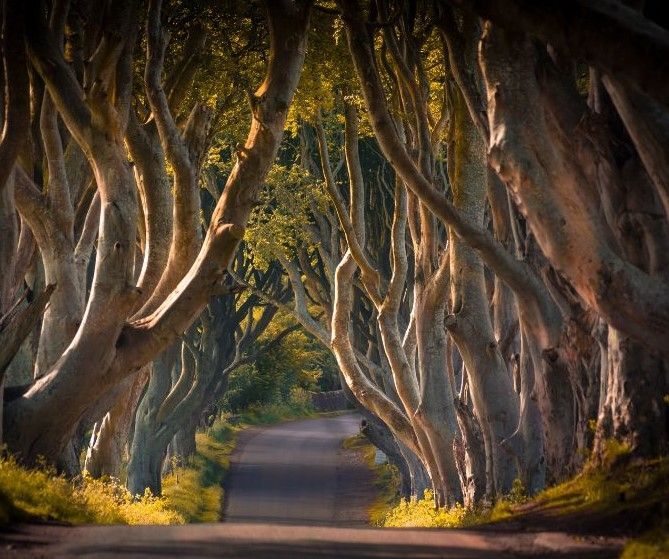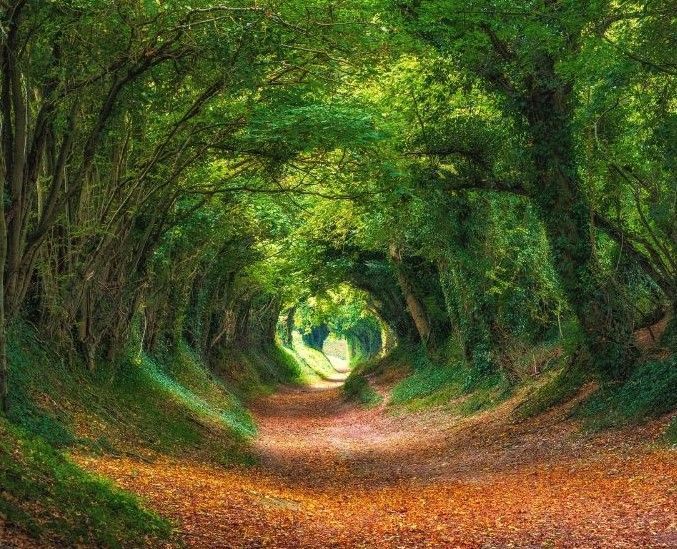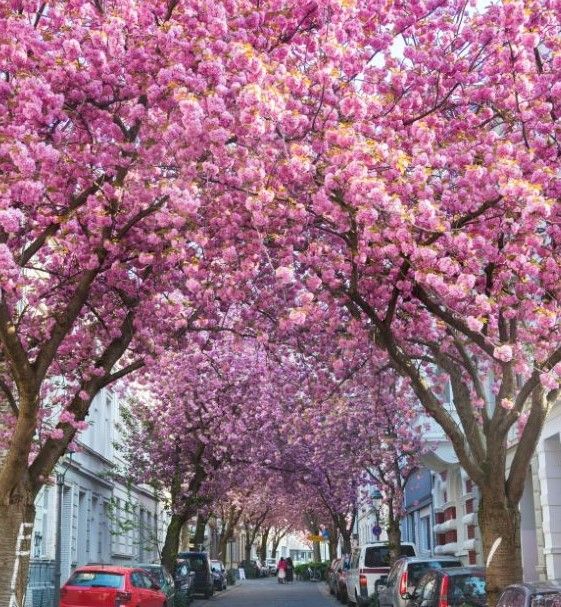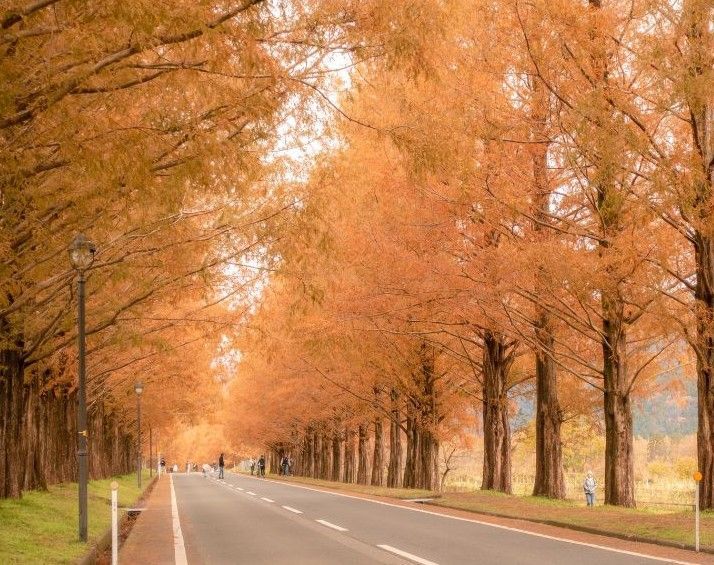6 Beautiful Must-See Tree Lined Streets of the World
Traveling brings an unparalleled sense of joy and discovery, opening doors to new experiences and perspectives. It allows us to immerse ourselves in different cultures, soaking in beautiful natural views, and forging connections with people from diverse backgrounds. The thrill of exploring unfamiliar landscapes, whether it's wandering through bustling city streets or trekking along serene natural trails, ignites a sense of adventure within us. Ultimately, the joys of traveling lie not only in the destinations we explore but in the profound transformation it brings to our hearts and minds.
This joy in exploring the natural world brings us to our list of 6 tree-lined streets from around the world. Even if you are traveling for other reasons, making any one of these locations a pit stop along the way is sure to add a bit of adventure to your trip. Whether you're a nature enthusiast looking for a quiet stroll, a traveler seeking out charming sights, or a photographer searching for your next subject, these destinations are sure to check all the boxes.

1. The Dark Hedges (Ballymoney, Northern Ireland)
This tree-lined avenue was used as one of the filming locations in the series, Game of Thrones. It features ninety ancient beech trees forming a gorgeous natural archway, which were planted in the 18th century as an impressive entrance to the Stuart family's Georgian mansion, Gracehill House. The beech trees, with their gnarled branches and intertwined canopies, create a magical and somewhat eerie atmosphere perfect for an autumn stroll.
Planning your visit to the Dark Hedges
When planning your visit to the Dark Hedges, it's essential to consider the best times of the year to experience its beauty. Spring, from April to June, brings the trees to life with fresh green leaves and mild weather, making it an ideal time for a leisurely visit. Summer months give visitors the opportunity to see the foliage at its peak, although this period tends to attract larger crowds. As autumn sets in, the Dark Hedges transform into a stunning display of fall colors, offering excellent photo opportunities amidst the reds, oranges, and yellows. Winter, from December to February, provides a quieter atmosphere, with bare branches creating a beautiful scene, particularly when touched by frost or snow. To avoid crowds, aim for weekdays and early mornings or late afternoons, while photographers may prefer the soft lighting of sunrise and sunset. Checking for special events or festivals adds an extra layer of enjoyment to your visit, but always keep an eye on weather forecasts and conservation guidelines to ensure a respectful and memorable experience.

2. Jacaranda Street (Pretoria, South Africa)
The Jacaranda trees in Pretoria, South Africa, are famous for their stunning purple blossoms that typically bloom in spring (September-November in the southern hemisphere), transforming the city streets into a sea of vibrant color. While there isn't a specific "Jacaranda Street" in Pretoria, the city is known for its many streets lined with Jacaranda trees. One of the most well-known locations for viewing Jacarandas in Pretoria is in the older parts of the city, particularly in areas like Arcadia, Muckleneuk, and Brooklyn. These neighborhoods are renowned for their Jacaranda-lined streets and can offer a captivating travel experience.
Planning your visit to the Jacaranda trees
During the blooming season, September through November, the city of Pretoria is transformed into a stunning purple landscape. Peak bloom typically occurs in mid-October, creating a breathtaking and picturesque canopy across the urban landscape. For photography enthusiasts, capturing this scene is best done during early mornings or late afternoons, when the soft lighting accentuates the beauty of the blossoms. While some years may feature events and festivals celebrating the Jacaranda bloom, visitors can enjoy a quieter experience by planning their visit on weekdays, particularly during off-peak hours. However, it's essential to keep in mind that the timing of the bloom may vary due to weather conditions and local climate fluctuations. Checking with local sources or the city's tourism office for real-time updates ensures a well-timed and memorable visit.

3. Laburnum Arch (Bodnant Garden, Conwy, Wales)
Laburnum, commonly known as golden chain, is a genus of flowering plants that includes deciduous trees and shrubs. The Laburnum Arch at Bodnant Garden is a popular attraction, especially in late spring and early summer when the laburnum flowers are in full bloom. The arch is a spectacular tunnel covered with cascading yellow flowers from the laburnum trees. The vibrant yellow flowers of the laburnum create a striking contrast against the lush green surroundings.
Planning your visit to the Laburnum Arch
During late May to early June, the Laburnum Arch bursts into a dazzling display of cascading yellow flowers, creating a mesmerizing golden tunnel. Late May is typically the prime time to experience the arch at its peak, boasting vibrant blooms and mild weather conditions ideal for outdoor exploration in Wales. To avoid crowds, consider visiting on weekdays or during quieter hours, particularly if you're keen on capturing the arch's beauty through photography. For optimal lighting, early mornings or late afternoons offer softer hues that enhance the visual impact of the yellow blossoms. Prior to your visit, check with Bodnant Garden or local sources for real-time updates on the arch's blooming status and any special events. Remember to respect conservation efforts and guidelines in place to preserve this natural wonder. While late May to early June is the recommended period for witnessing the Laburnum Arch in full bloom, it's advisable to stay informed as blooming times can vary.

4. Halnaker Tree Tunnel (West Sussex, England)
The Halnaker Tree Tunnel is a quaint pathway surrounded by overarching Beech trees, creating this stunning tunnel effect. It is located along a footpath leading to Halnaker Windmill, a historic landmark in the area (which we also recommend visiting). The pathway is known for its enchanting scenery, especially when the trees are in full foliage.
Planning your visit to the Halnaker Tree Tunnel
Throughout the year, the Halnaker Tree Tunnel promises a delightful experience for nature lovers and photographers alike. Spring (March to May) marks a lovely time to explore the Halnaker Tree Tunnel as the trees burst with vibrant green leaves, creating a lush canopy. The weather is usually mild, perfect for enjoying the blooming flowers and fresh foliage. In summer (June to August), the tunnel provides cooling shade with its full greenery, making it ideal for leisurely walks in warmer weather and longer daylight hours. As autumn arrives (September to November), the tunnel transforms with a breathtaking array of reds, oranges, and yellows as leaves change color, offering a picturesque scene. Winter (December to February) brings a serene ambiance, with bare branches and occasional snow adding to the tunnel's charm. Each season offers unique photography opportunities, whether it's capturing the greenery of spring and summer, the warm tones of autumn, or the stark beauty of winter. Consider your weather preferences, with milder temperatures in spring and autumn, warmer weather in summer, and colder temperatures in winter. For a quieter visit, weekdays and early mornings are best. Before your trip, check local weather forecasts and any events that might affect accessibility.

5. Cherry Blossom Avenue (Bonn, Germany)
Bonn, Germany, is known for its beautiful cherry blossoms, particularly along Heerstraße, often referred to as the "Cherry Blossom Avenue" (Kirschblütenallee in German). This scenic avenue features rows of cherry trees, which when they bloom in spring, create a stunning display of pink and white blossoms. The trees carry some significance for the area; they were a gift from the local Japanese community to the city. The peak bloom typically occurs in April, and during this time, the avenue attracts both locals and tourists who come to enjoy the picturesque scenery.
Planning your visit to Cherry Blossom Ave
Late April to early May marks the blooming season for cherry blossoms in Bonn, offering a short-lived yet beautiful spectacle. The peak bloom typically occurs in late April, depending on local weather conditions which play a crucial role in determining the timing of the bloom. Warmer temperatures hasten the process and cooler temperatures potentially delay it. To avoid crowds, consider visiting Cherry Blossom Ave on weekdays or during quieter times of the day. Photography enthusiasts may find the soft lighting of early mornings and late afternoons ideal for capturing the cherry blossoms' beauty, though peak bloom times may draw larger crowds. Keep an eye out for any festivals or events happening during the blooming season, and stay updated with local announcements for real-time information on the cherry blossoms' status. While the exact timing of the bloom can vary, planning your visit to Bonn between late April and early May increases the likelihood of witnessing the cherry blossoms in full bloom.

6. The Metasequoia-Lined Roads (Takashima, Shiga, Japan)
The Metasequoia-lined roads in Japan are iconic and known for their stunning beauty. These roads feature 500 Metasequoia trees, commonly known as dawn redwood trees. The tree-lined roads are especially famous in areas like Shiga Prefecture, which includes Takashima, as well as in other locations throughout the country. These trees are characterized by their tall, straight trunks, feathery foliage, and vibrant autumn colors.
Planning your visit to the Metasequoia-Lined Roads:
Spring (late April to early May) welcomes visitors to witness the Metasequoia trees as they burst into fresh green foliage, forming a vibrant and lush canopy above the roads. Throughout summer (June to August), the trees reach their prime, creating a cool and refreshing ambiance perfect for leisurely strolls. As autumn sets in from late October to early November, the Metasequoia trees undergo a breathtaking transformation, showcasing hues of red, orange, and yellow perfect for photography enthusiasts. However, photographers will find ample opportunities throughout the year, with softer lighting conditions during early mornings and late afternoons enhancing the beauty captured in each season. To avoid crowds, opt for weekdays and early mornings, especially during peak seasons such as cherry blossom or autumn foliage. Checking for local events or festivals can also enrich your visit with cultural activities and guided tours. Keep in mind that the timing of foliage changes may vary each year, so stay updated with local forecasts and updates for current conditions. Whether you're drawn to the vibrant colors of spring and autumn or the tranquil beauty of winter, the Metasequoia tree-lined road in Shiga, Japan, promises a stunning natural spectacle throughout the seasons.
Conclusion
While these examples represent just a small fraction of the many beautiful tree-lined streets worldwide, they showcase the diversity and natural beauty that can be found in urban landscapes. Whether you're seeking a peaceful stroll, a vibrant community atmosphere, or simply a visually appealing environment, from the spring blossoms to the vibrant foliage of autumn, tree-lined streets offer a multifaceted experience that can enhance your well-being offering a calm and captivating experience.
References:
The Metasequoia Tree-lined Road/ Shiga | Nipponderful.com (2ponderful.com)
Metasequoia Avenue: A Surreal Journey - junketjapan
How to Visit the Cherry Blossom Avenue in Bonn, Germany - That One Point of View
Alabama's Tunnel Of Trees Is Truly Magical (onlyinyourstate.com)
The path to Halnaker Windmill, a magical tunnel of trees (hellosussex.com)
Laburnum Arch – Conwy, Wales - Atlas Obscura
The Jacaranda City | Pretoria (showme.co.za)
The Dark Hedges of Northern Ireland - All you Need to Know (theplanetd.com)
Images - Canva
Check out the latest:









